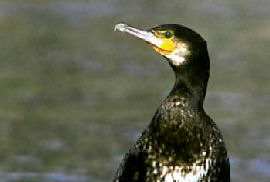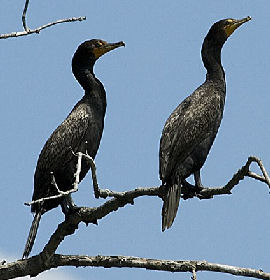Upright-perching Water Birds
Description
12" (30 cm). Jay-sized. Long, wedge-shaped tail displaying a longitudinal ridge or keel when in flight. Appears all black at a distance but is actually highly iridescent, with colors varying from blue to purple to green to bronze, depending on the light. Bright yellow eyes. Female duller and somewhat smaller than male.
Habitat
Lawns, parks, fields, open woodlands.
Discussion
The Common Grackle is an opportunistic feeder, varying an insect and grain diet with crayfish, frogs, mice, and both the eggs and the young of small birds. During courtship, it jerks its body, lowers wing, tail, and head, and squeals. It also exhibits its long, conspicuous tail in display flight. In some northern areas it congregates by the thousands during migration as well as in winter roosts. This species is smaller and lacks the strong sex differences of the Great-tailed Grackle.




